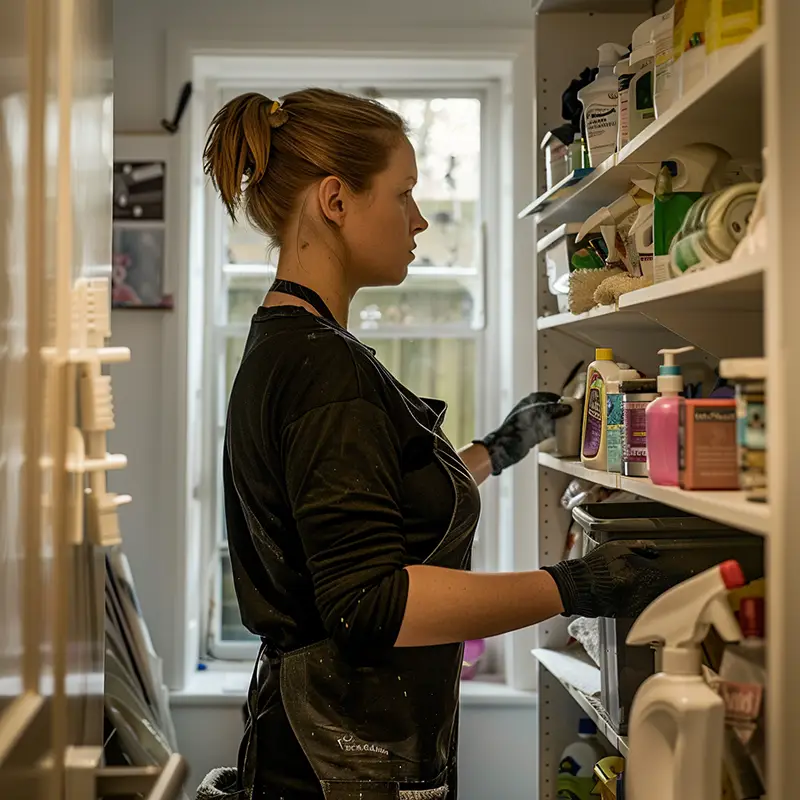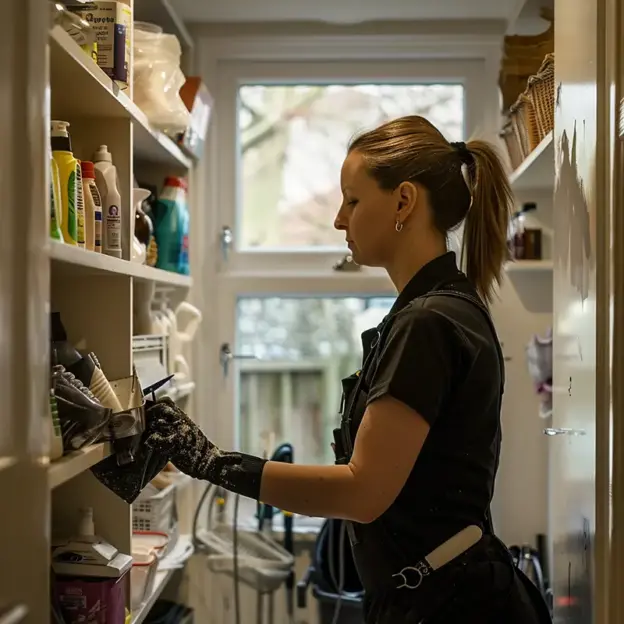This article will take a closer look at the six steps in the surface-cleaning process and why each step is integral to overall success. We will also provide a detailed description of each stage and why it is essential to provide your home or office building with the deep, thorough cleaning it needs and that you, your family, friends and colleagues deserve.
Stage 1: What happens in the pre-cleaning phase?
This step lays the foundation for how effectively you can clean the area. Good pre-cleaning will remove most of the bulk dirt and debris from contaminated surfaces that require thorough cleaning. Although many people believe this step is unnecessary, most cleaning professionals assure us it is necessary.

So, how important is the pre-cleaning step in the cleaning process? Pre-cleaning drastically reduces the number of contaminants in the home or workplace. Pre-cleaning in the workplace is also directly related to increased worker satisfaction because they feel much safer in a cleaner environment. Remember that the more you pay attention to this step, the easier the rest of the cleaning process will be for you.
Stage 2: What happens during the primary cleaning step?
It is another important aspect of the cleaning process. Once you have completed the pre-cleaning step, it is time to use detergents and other cleaning agents to remove any remaining dirt and debris from the surfaces. If you have done your pre-cleaning correctly, you will quickly remove any remaining dirt with a floor mop or cloth for all other surfaces.
That also gives your home a fresh smell and sparkling look. People tend to feel much more comfortable in clean spaces. It is valid both at home and in the office. A cleaner work environment improves employees’ sense of health and well-being. Microbes and bacteria grow in a dirty environment, and the main phase of the cleaning process is the first step towards eliminating these contaminants.

Stage 3 – How to properly rinse the area?
The main phase of the cleaning process usually leaves behind some detergent or other cleaning agents. Here, good rinsing comes into play. This step requires you to wipe your freshly cleaned surfaces with a rag and hot water. You can also do the same with a mop and hot water to remove any detergents that may be left after you have finished cleaning.
This step is also crucial for your family, friends or colleagues’ safety because it prevents the residual accumulation of detergents over time. Good rinsing helps optimise the cleaning process and is an essential step towards achieving a higher standard of cleaning. While cleaning is the removal of dirt and other contaminants, rinsing is the removal of detergents that have the potential to accumulate over time.
Stage 4: What is involved in the disinfection phase?
While each step of the cleaning process is significant, the disinfection step is perhaps the most important. It directly attacks the microbes and bacteria that lurk in your home or office space.
Home is not the only place where bacteria lurk. They are also widespread in the workplace. According to research, over 10 million bacteria are in the space where your hand rests on your desk. These microbes and bacteria can be directly responsible for the eventual illness. Be sure to disinfect with heat or a chemical disinfectant, which effectively destroys any hidden microorganisms on all your surfaces.
Stage 5: What is the purpose of the last rinse?
The rinsing phase of the cleaning process is so important that we recommend doing it twice. The purpose of the last rinse is to remove all chemical disinfectants that remain after the disinfection phase. If not properly and thoroughly rinsed, these chemicals can cause problems for people living or working in the area you have just cleaned.
Just like in the first rinsing step, the last rinsing should end with clean, hot water and a clean towel. If you use clean towels and hot water during the final rinse, you only partially remove all traces of disinfectants that can cause serious harm if accidentally swallowed. After finishing the last rinse, your surfaces should be brilliantly clean and safe for everyone with whom you share the space.
Step 6: How to ensure that you did the drying step correctly?
The drying step is the last in the cleaning process. After completing the previous five steps, make sure you use a clean, dry cloth to remove any remaining water from all of your freshly cleaned surfaces. You can use a mop to dry all the floors you have just wiped and rinsed. You can use a fan to dry the flooring or air surfaces. We recommend using clean, dry towels instead of air drying unless you have the luxury of letting the floors dry the whole night.
The most crucial reason for drying all the areas you have cleaned is that mould and bacteria grow in wet areas. Safety is another critical reason to ensure that all surfaces are adequately dried. Wet areas can cause slipping or falling, leading to severe injuries. So, dry completely all the surfaces you have just cleaned.
Conclusion
If you want to ensure you clean your home or office properly, you must follow all six cleaning steps. The first thing you need to do is pre-clean all your surfaces in this process. Then, you will continue with the main stage of cleaning. After finishing the basic cleaning, you must rinse the detergents and cleaners from these areas. You will then need to disinfect your home or office building. This step is the most important because it eliminates almost all germs and bacteria.
That is followed by a final rinse, ensuring you have removed all the disinfectants you have used. Failure to follow these steps can lead to serious health risks. The drying stage is the last step in the cleaning process.
After completing all six steps, you will have a sparkling home or office to share with family, friends and colleagues proudly.
